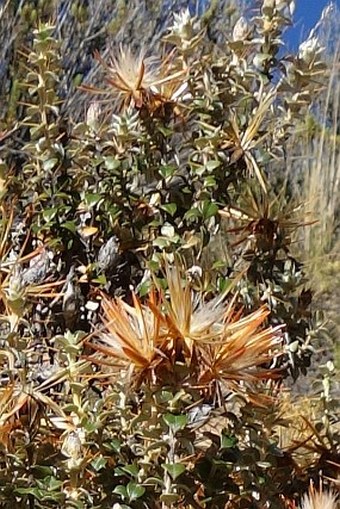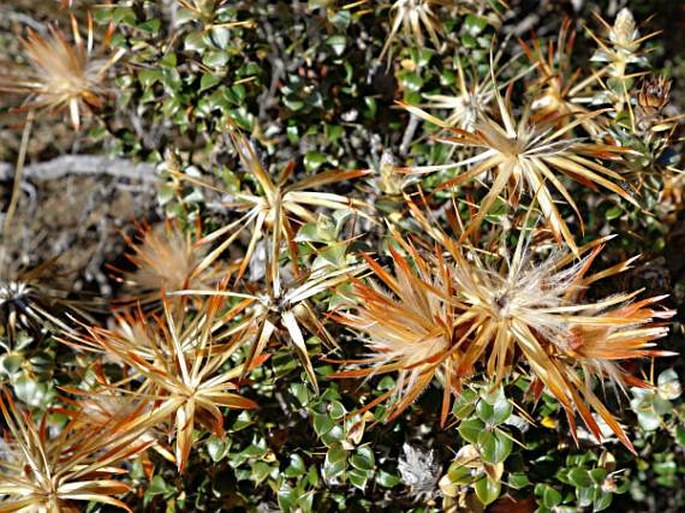Syn.: Chuquiraga rotundifolia Wedd.
Family: Asteraceae Bercht. et J. Presl

Distribution: This Andean species occurs in Peru and northern Chile. The species is variable, several infrageneric taxa are recognized (C. s. subsp. rotundifolia, C. s. var. morenonis, var. parviflora) which are sometimes treated as full species.
Ecology: It grows in arid areas, in Andean desert, in elevations from 3300 to 5100 m.

Description: Small evergreen shrub, 40–150(–200) cm tall, with erect branches. Leaves opposite, ovate to lanceolate, 5–20 mm long, margins flat, glabrous above, hairy beneath, spines axillary, 7–18 mm long. Capitula with less than 30 florets, involucre narrowly cylindrical-campanulate, phyllaries acute, corolla tubular, yellow. The fruit is an achene.
Use: Branches and leaves are used in the Peruvian traditional medicine for their anti-inflammatory properties and for the treatment of infections.
Note: The genus Chuquiraga contains about 20 species. The genus is distributed in the Andes from Colombia through Peru and Chile to Patagonia.









These images were taken in Chile, Putre (by Ljuba Procházková, October 10, 2013).


